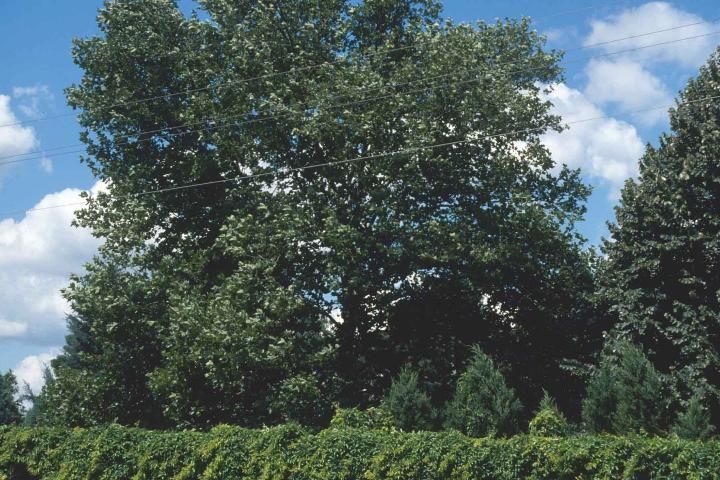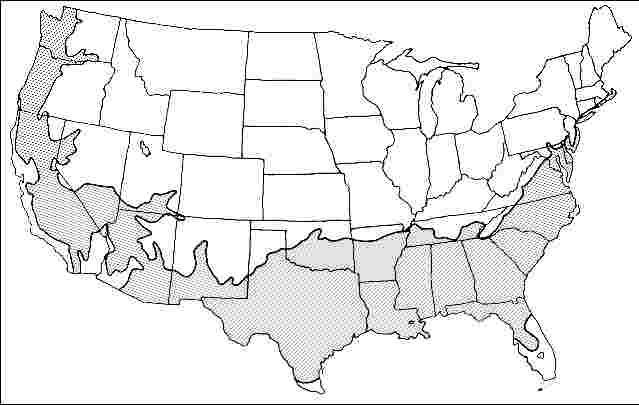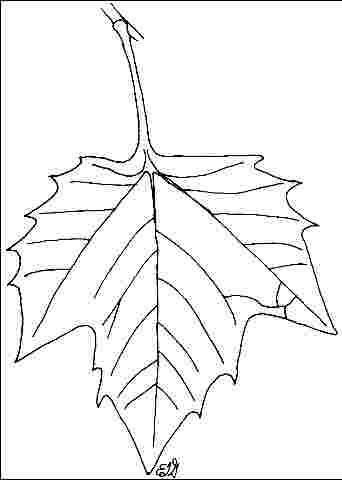Introduction
This deciduous tree is one of the parents of the popular London planetree (Platanus x acerifolia) and has more deeply lobed leaves than its offspring (Figure 1). Leaves are almost maple-like. Capable of reaching 80 feet in height, the Oriental planetree has very strong branches and is quite useful as a shade tree. The wood is so tough, dense, and hard it is often used for butcher’s blocks and furniture. The springtime flowers are followed by fruits which are found on stalks in groups of three to 6. The attractive bark is cream colored and flaky and very striking in the winter.

Credit: Ed Gilman, UF/IFAS
General Information
Scientific name: Platanus orientalis
Pronunciation: PLAT-uh-nus or-ee-en-TAY-liss
Common name(s): Oriental Planetree
Family: Platanaceae
USDA hardiness zones: 7A through 9A (Figure 2)
Origin: not native to North America
Invasive potential: not assessed/incomplete assessment
Uses: shade

Credit: UF/IFAS
Description
Height: 70 to 80 feet
Spread: 50 to 70 feet
Crown uniformity: symmetrical
Crown shape: round, pyramidal
Crown density: moderate
Growth rate: fast
Texture: coarse
Foliage
Leaf arrangement: alternate (Figure 3)
Leaf type: simple
Leaf margin: incised, lobed
Leaf shape: ovate, star-shaped
Leaf venation: palmate
Leaf type and persistence: deciduous
Leaf blade length: 4 to 8 inches
Leaf color: green
Fall color: yellow
Fall characteristic: not showy

Credit: UF/IFAS
Flower
Flower color: unknown
Flower characteristics: not showy
Fruit
Fruit shape: round
Fruit length: 0.5 to 1 inch
Fruit covering: dry or hard
Fruit color: brown, tan
Fruit characteristics: does not attract wildlife; showy; fruit/leaves a litter problem
Trunk and Branches
Trunk/bark/branches: branches droop; showy; typically one trunk; thorns
Pruning requirement: little required
Breakage: resistant
Current year twig color: brown
Current year twig thickness: medium
Wood specific gravity: unknown
Culture
Light requirement: full sun, partial sun, or partial shade
Soil tolerances: clay; sand; loam; alkaline; acidic; occasionally wet; well-drained
Drought tolerance: high
Aerosol salt tolerance: unknown
Other
Roots: can form large surface roots
Winter interest: yes
Outstanding tree: no
Ozone sensitivity: sensitive
Verticillium wilt susceptibility: resistant
Pest resistance: sensitive to pests/diseases
Use and Management
It was widely planted in many northern cities, but bacterial leaf scorch and canker stain have killed many trees in these communities. If this tree is planted, do so with moderation to avoid these unfortunate problems. Naturally found along streams and floodplain riverbeds, Oriental Planetree should be grown in full sun or partial shade on moist soils. It grows on acid or alkaline soil, wet or dry. Leaves may drop early in dry years. Should be grown primarily for its resistance to anthracnose disease which can be devastating to American sycamore, but it is now rare in the trade in the United States.
Pests and Diseases
Canker stain and stem canker can severely weaken or kill trees. Anthracnose can be serious in wet years, although this planetree is more resistant than American sycamore. Lace bug, and similar insects can be pests.